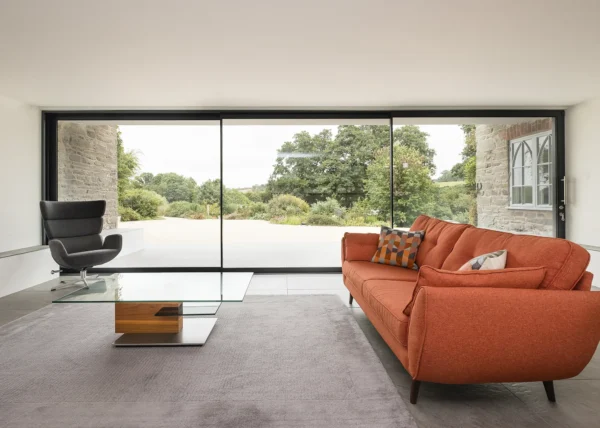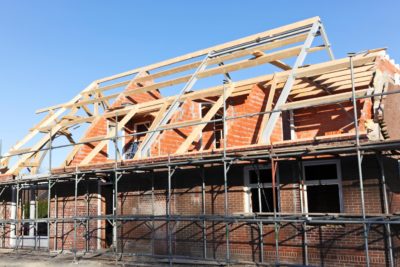Self Build Insurance: Why You Need to Get Build Costs Right
There’s no doubt that self building is a fantastic way to create your dream bespoke home. Most self builders know the importance of insuring the construction phase of their projects – but when it comes to the finer details it can be difficult to know exactly what’s required.
The key to ensuring you can recover from a serious loss is to insure your project at its ‘professional reinstatement cost’. But what does this mean for your scheme?
The dangers of underinsurance
When you come to complete your insurance proposal form, your budget (in other words, the theoretical build cost) will be prevalent in your mind. After all, that’s the amount you’ve allocated to the project. But be wary of insuring your new build home for this sum without thinking hard about what would happen if you’re hit by a serious loss.
A much better route is to provide your insurance company with a professional reinstatement cost, which is what we ask for at Protek. Fundamentally, this would be the amount of money required to professionally reinstate the project using a main contractor, should it be destroyed (by fire, for example) two days prior to completion.
The reason for using this figure for your self build insurance is simple. If you insured on your expected build budget, this is likely to be a lot less than the cost of using a main contractor (after all, this is one of the attractions of self building). This means the insurance sum may not be enough to rebuild quickly from a major catastrophe.
This underinsurance problem doesn’t raise its head until after a catastrophic loss hits. Sadly, this can leave self builders without sufficient funds to get the property quickly and professionally rebuilt. Instead, you could find yourself faced with escalating costs and next to zero spare financial resources – meaning you’ll have to attempt the project again on a very limited budget.
This issue can be exacerbated when the project involves an existing building. A barn conversion will need cover for the professional reinstatement cost of any parts of the structure you retained, in addition to the new conversion works. These figures can be quite difficult to assess.
Should the worst happen, these factors can put a huge strain on self builders – but they are easily averted through professional assessment of the correct reinstatement cost.
Establishing the right reinstatement cost
The sum your project is insured for should be carefully considered to reflect the gross cost of professional labour and materials, together with fees for site clearance, debris removal and professional fees.
If you’ve opted for a turnkey route with a package supplier or building contractor, this will be a good indicator of an appropriate figure.
Alternatively, you could use the Royal Institute of Chartered Surveyors’ (RICS) rebuilding cost calculator. Before you use this tool, you’ll need to know your home’s external floor area for both upstairs and downstairs: this will give you the rebuilding cost per square metre.
There are limits to using the rebuild cost calculator as it doesn’t allow for every construction method, for instance.
If there is an existing structure forming part of your project then this will need to be considered very carefully. Identifying reinstatement costs in this scenario is best carried out by a building surveyor, who will be able to fully assess the hidden cost of rebuilding – especially if the property is listed.
In some situations, a self builder’s construction costs could be as much as 30% cheaper than a professional reinstatement. While most insurance policies provide an element of increased reinstatement, this can be quickly wiped out if the project goes over budget. For this reason you should reassess your reinstatement cost regularly during the build.
In the grand scheme of things, the effect of reinstatement cost on your insurance premium shouldn’t be your focus. If you suffer a loss and are found to be underinsured by say 50%, your claim can reduced by 50% (the proportion by which it was underinsured), which could result in a bad situation becoming much worse.
It’s important to bear in mind that rebuild costs have absolutely nothing to do with the land value or the market value of a property upon completion. If your mortgage lender asks you to insure for the market value of the completed property, then it’s worth pulling them up on it.
Reality Check: A Worst-Case ScenarioLet’s assume for a moment that you’ve taken a work break (or extensively juggled your hours) to build your own home. You’re saving money by managing the whole project and using individual trades to do most of the work – plus doing a lot of general labour yourself. It’s now 11 months in and you’re getting close to finishing: the kitchen is being fitted and the last of the decoration has been done. Your final stage payment mortgage drawdown is imminent and you are looking forward to being able to move in to the property and switch to a standard mortgage. There’s a roofing contractor on site dealing with a flashing that hasn’t been performed correctly – when a freak of bad luck hits. The roofing contractor knocks over his blowlamp and starts a house fire that causes catastrophic damage, rendering the property totally destroyed. While it’s a devastating situation, you’ll take some comfort from knowing the project is insured for the build cost you stipulated. The problem is, it’s only when you check your policy that you realise the build cost you gave the insurance provider 11 months ago now seems a little low, as the project costs escalated over time. The loss adjuster arrives on site to assess the damage and start the process of managing the claim. Their job is to get the property rebuilt as quickly as possible and this will involve pricing up the reinstatement works. This work will need to be carried out by contractors, as you can no longer spare the time to labour or manage because you need to get back to work to pay the mortgage which is now extended. The loss adjuster’s reserve estimate works out considerably more than the build cost you actually insured the project for initially and despite the fact there is an uplift clause in the policy giving you some flexibility, you are badly underinsured and there will be insufficient funds to rebuild the property. |
Simon Middleton is the face behind Protek Self Build, which provides site insurance and structural warranty products to the self build market. He has been operating in the self build industry for over 20 years.
































































































 Login/register to save Article for later
Login/register to save Article for later















Comments are closed.